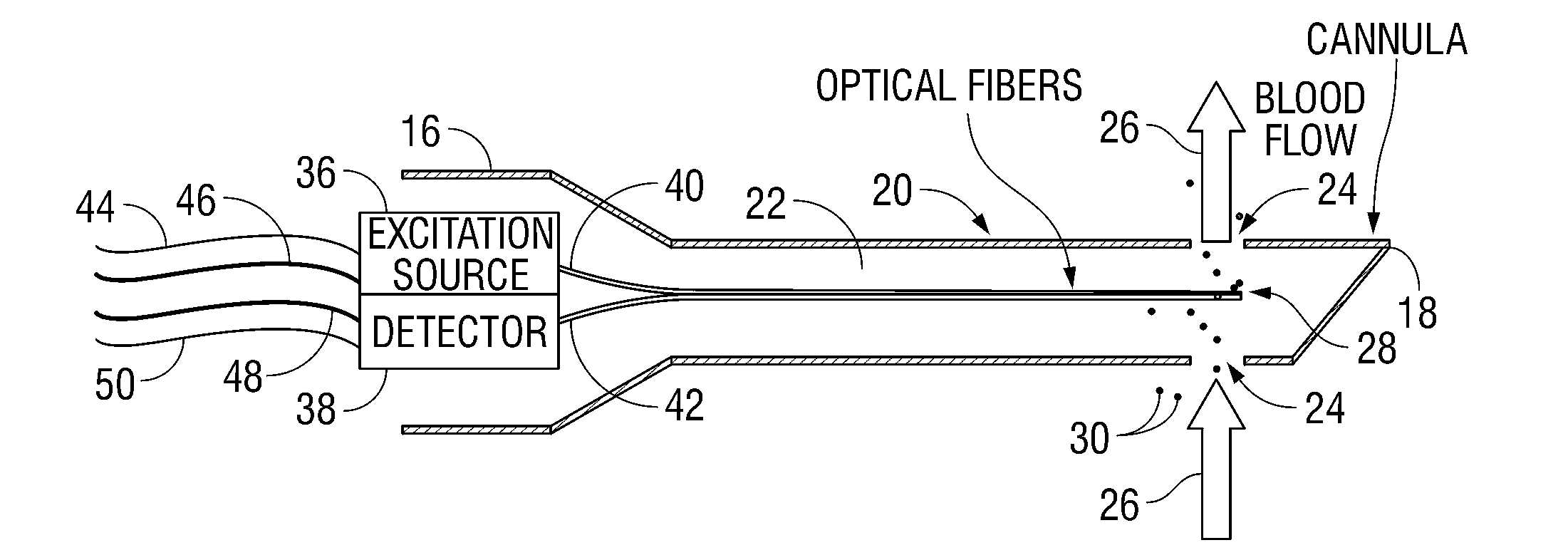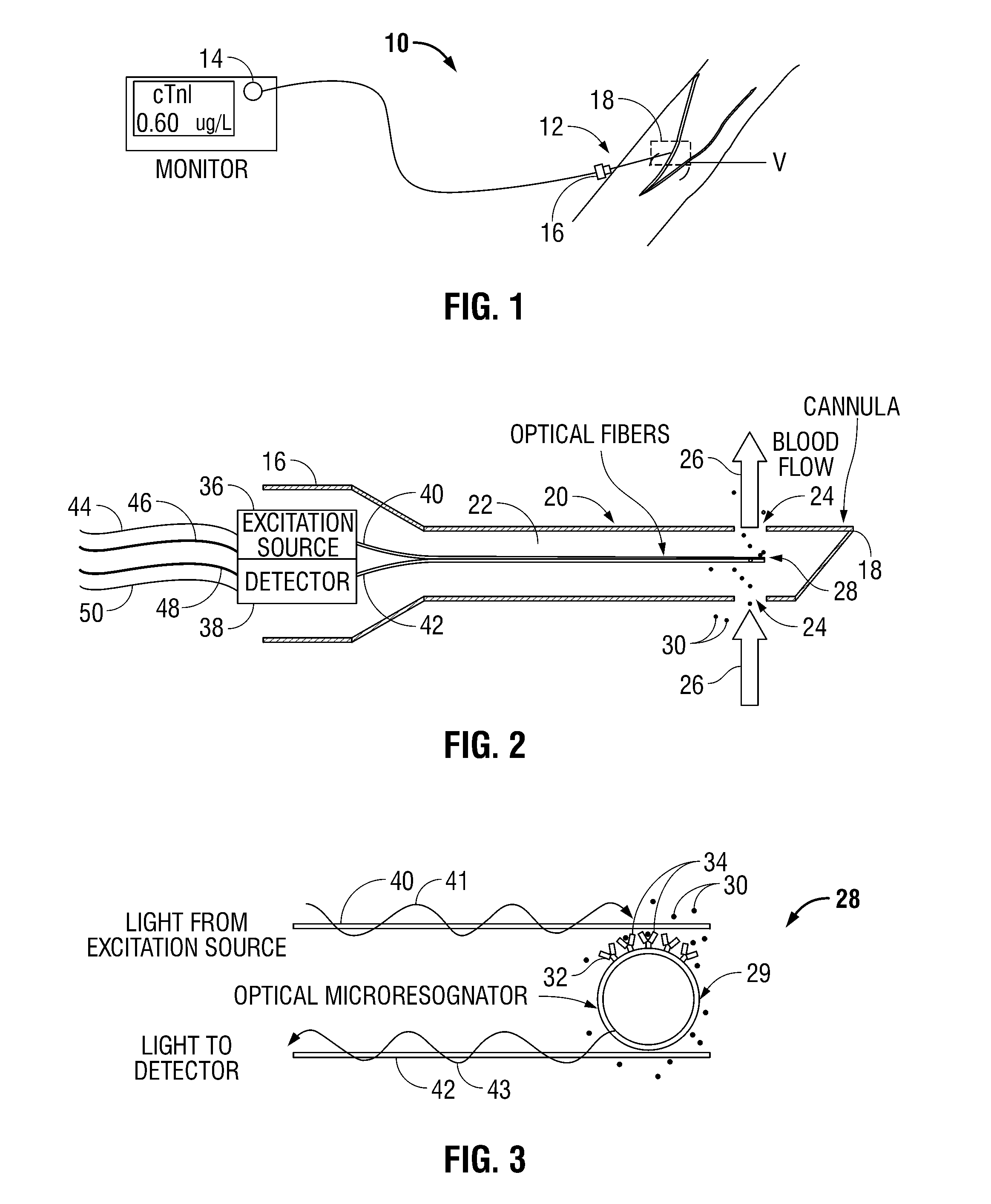System and Method for Optical Continuous Detection of an Analyte In Bloodstream
an optical continuous and analyte technology, applied in the field of blood assays, can solve the problems of reducing the overall usefulness and effectiveness of the blood analyzer, unable to provide real or present-time data of the analyte of interest present in the blood stream, and conventional blood analyzers failing to detect the clinically meaningful rate of change in analyte concentration
- Summary
- Abstract
- Description
- Claims
- Application Information
AI Technical Summary
Benefits of technology
Problems solved by technology
Method used
Image
Examples
Embodiment Construction
[0023]Particular embodiments of the present disclosure are described hereinbelow with reference to the accompanying drawings. In the following description, well-known functions or constructions are not described in detail to avoid obscuring the present disclosure in unnecessary detail.
[0024]Referring now to FIGS. 1-3, blood analyzer 10 in accordance with the principles of the present disclosure is illustrated. Generally, blood analyzer 10 includes an access member or a probe 12 and a monitor 14 in electrical communication with the probe 12. The probe 12 has a proximal end 16 and a distal end 18. The probe 12 may be any tubular structure (e.g., a catheter or a cannula) having a housing 20 and a lumen 22 defined therein and one or more ports 24 at the distal end 18 thereof adapted to provide fluid access to the lumen 22. The distal end 18 of the probe 12 is inserted into a blood vessel “V” to allow for the blood to flow into the lumen as illustrated by directional arrows 26. It is env...
PUM
 Login to View More
Login to View More Abstract
Description
Claims
Application Information
 Login to View More
Login to View More - R&D
- Intellectual Property
- Life Sciences
- Materials
- Tech Scout
- Unparalleled Data Quality
- Higher Quality Content
- 60% Fewer Hallucinations
Browse by: Latest US Patents, China's latest patents, Technical Efficacy Thesaurus, Application Domain, Technology Topic, Popular Technical Reports.
© 2025 PatSnap. All rights reserved.Legal|Privacy policy|Modern Slavery Act Transparency Statement|Sitemap|About US| Contact US: help@patsnap.com



